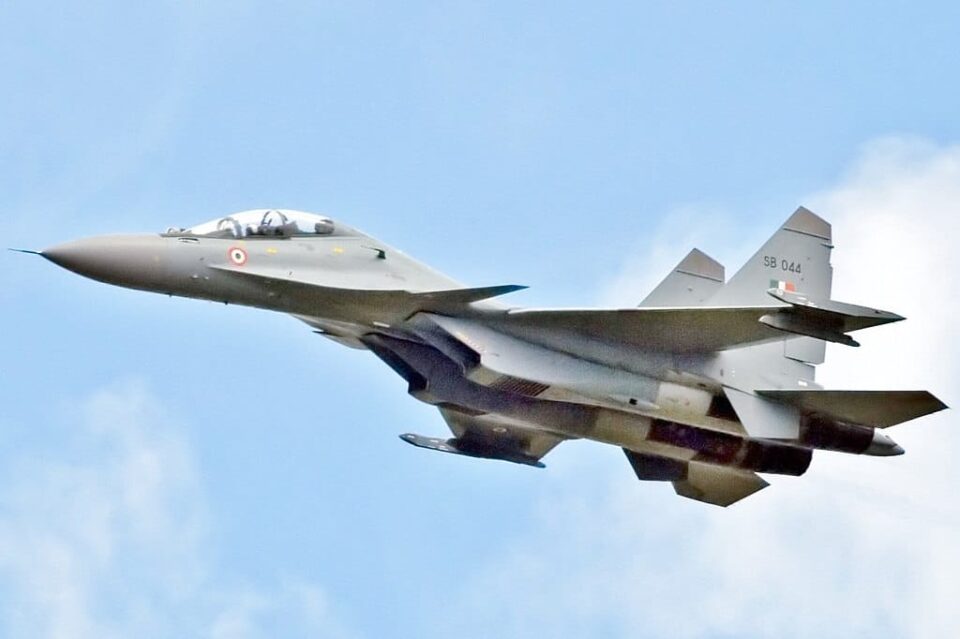Aviation
Russia to Deliver Vital Materials for India’s Sukhoi-30MKI Jets

In a substantial advancement for India’s defence manufacturing sector, Russia is set to supply critical metallurgical inputs to support the overhaul and modernization of the Sukhoi-30MKI fighter jet fleet.
This move is expected to significantly enhance the operational readiness and longevity of one of the Indian Air Force’s (IAF) most pivotal aircraft.
Essential Metallurgical Inputs for Overhaul
State-owned Hindustan Aeronautics Limited (HAL), a key player in India’s aerospace sector, will manage the overhaul of the Sukhoi-30MKI at its facility in Koraput, Odisha. The delivery of essential raw materials and processed components, particularly superalloys, from Russia is integral to this overhaul.
These high-grade materials are crucial for maintaining the aircraft’s structural integrity and performance capabilities during the maintenance process.
Russia’s Next-Gen Il-76 Commercial Variant Ready for 2028 Debut
The Sukhoi-30MKI jets, which play a central role in India’s air defence strategy, require meticulous upkeep to ensure they remain at peak operational efficiency.
The timely provision of these materials will enable HAL to undertake necessary upgrades and maintenance tasks, thereby extending the service life of the aircraft and ensuring their continued effectiveness in various combat scenarios.
Upcoming Modernization Programme
In addition to the immediate overhaul efforts, HAL is gearing up for a significant modernization programme set to begin in fiscal year 2026-27.
This extensive upgrade will focus on enhancing the Sukhoi-30MKI‘s capabilities to maintain its edge in the rapidly evolving field of air combat.
One of the most notable aspects of this modernization is the comprehensive redesign of the cockpit. The upgrade will introduce new-generation touch widescreen displays, replacing the existing cockpit interfaces.
This overhaul is designed to boost pilot situational awareness, data visualization, and control over the aircraft’s systems, offering a more intuitive and responsive interface.
The new cockpit technology is expected to facilitate better decision-making and operational efficiency, contributing to the overall effectiveness of the Sukhoi-30MKI in various mission scenarios.
Boeing Suspends 777X Flight Tests After Structural Cracks Detected
Enhanced Operational Capabilities
The Sukhoi-30MKI is renowned for its advanced autopilot capability, which supports all flight stages, including low-altitude operations using terrain-following radar.
This feature allows the aircraft to conduct precise and effective combat operations both individually and as part of a larger formation.
The upgrades planned as part of the modernization programme will further enhance these capabilities, ensuring that the Sukhoi-30MKI remains a formidable asset in the IAF’s fleet.
The combined effect of the Russian metallurgical inputs and the upcoming modernization efforts is set to significantly bolster the Sukhoi-30MKI’s performance and longevity.
UK Airline Faces £400k Bill for Each Plane Repair Due to EU Regulations

Aviation
China Eastern Receives Its Ninth C919 Aircraft, Marking a New Milestone

China Eastern Airlines (CEA) has reached a significant milestone with the delivery of its ninth COMAC C919 aircraft, continuing its lead as the launch customer for China’s domestic narrow-body airliner.
On Thursday, the airline received the latest addition to its fleet, registered as B-657T, marking another step in China’s ambitious efforts to establish itself as a key player in the global aerospace market.
Virgin Australia Launches Black Friday Sale on Flights Worldwide
This delivery is part of a major achievement for COMAC (Commercial Aircraft Corporation of China), which has now delivered a total of 10 comac c919 in 2024 alone, a remarkable increase from just three jets delivered by the end of 2023.
The C919 program represents China’s entry into the competitive market for commercial aircraft, aiming to rival the dominance of manufacturers like Airbus and Boeing in the narrow-body sector.
These 6 Airlines Are Giving You Free Wi-Fi on Your 2025 Flights
One standout feature of the c919 is its innovative in-flight technology, particularly its Wi-Fi system. Developed by the China Electronics Technology Group Corporation (CETC), this system allows passengers to connect to the “CEAIR-WIFI” wireless hotspot, providing seamless access to in-flight entertainment.
Through the website www.muflyer.com, travelers can enjoy a range of features including “Air Cinema” and “Air Games,” which enhance the flying experience.
Looking ahead, COMAC’s ambitions are not limited to narrow-body aircraft. At the 15th China International Aviation and Aerospace Exhibition in Zhuhai, c919 aircraft price made waves with the announcement of over 100 new aircraft orders.
A significant highlight was a high-profile agreement with Air China for the development of the C929, a widebody aircraft set to compete c919 vs a320 and c919 vs 737 with these models.
-

 Aviation2 months ago
Aviation2 months agoMicrosoft Flight Simulator Raises $3 Million to Bring Back the An-225 Mriya
-

 Airlines2 months ago
Airlines2 months agoQatar Citizens Can Travel to the United States Without a Visa
-

 Aviation2 months ago
Aviation2 months agoQatar Airways bans these new Electronic Devices on plane
-

 Defence2 months ago
Defence2 months agoWhich Country Has the Largest Fleet of Fighter Aircraft?
-

 Airlines1 week ago
Airlines1 week agoDAMAC Air: Dubai’s New Luxury Airline Offers Free Flights for Registration
-

 Airport2 months ago
Airport2 months agoWestern Sydney Airport Welcomes Its First Plane After 6 Years of construction
-

 Airlines7 days ago
Airlines7 days agoAir India to Launch aircraft maintenance training institute in Bengaluru
-

 Aviation2 months ago
Aviation2 months agoDid you know ? Once Boeing 747 carried 1088 passenger in 1991








